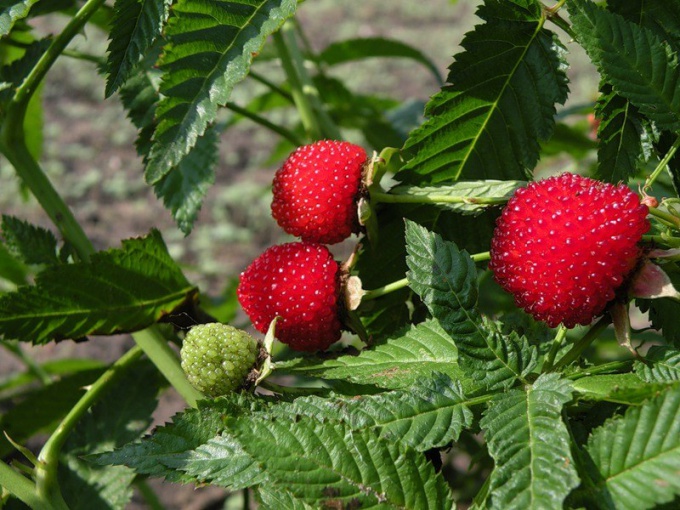Planting
Tibetan for planting raspberries, choose a well-lit place. It should be noted that raspberries can grow. So she grew up only to the designated location at the perimeter of the site should dig deep into the soil pieces of slate.
Tibetan raspberries are best planted in light loam or sandy loam soils with slightly acid reaction. Because the plants are shallow root system, before planting, you should dig a small pit, with a layer of manured and composted soil should be at least 30 cm.
As a rule, the seedlings of raspberry planted in the fall, with the onset of cold them dropped to the ground. If you bought them in the spring, you need to put them in dry weather, and then watered regularly.
Reproduction
Rosalita Tibetan raspberries are propagated by root suckers and cuttings. The greatest number of root suckers formed on the plant at 4-5 years of age. Some of them should be left in order to replacement of old shoots, the rest can be used for breeding.
In order to propagate the Tibetan raspberry root cuttings, when stubbing a raspberry remove the roots and prepare the cuttings with a length of 8-12 cm, their diameter should not exceed 2 mm. Blanks need to lay a solid next furrow, cover them with a soil layer of 5 cm and treated with peat.
Care
In winter, the aboveground part of the plant dies, so there is no need to save it. Branches should be cut almost flush with the ground and sprinkle. Raspberry growing rapidly during the spring and summer, so to avoid thickening of the prickly branches, cut off the twisted branches of the nearby bushes. This low-growing shrub not need to build back up, also there is no need to tie up.
Tibetan raspberry need regular soil moisture, because it has superficial roots. In very hot weather it should be watered every evening. Loosen the soil around the raspberry to be very careful not to accidentally damage her roots.
Mulching using peat, rotted manure and peat compost. The weeds around the raspberries clean hands, as when machining it is possible to hurt the roots, which leads to the death of the plant.
The dressing makes twice — in spring and autumn. In the spring, use ammonium sulfate (15-20 g/sq. m), and in the fall — sulphur of potassium (20-30 g/sq. m). First fertilizer evenly dispersed on the ground, then start mulching. Tibetan raspberries shielding before each winter, if the winter is harsh and snowy with rapid changes in temperature.
